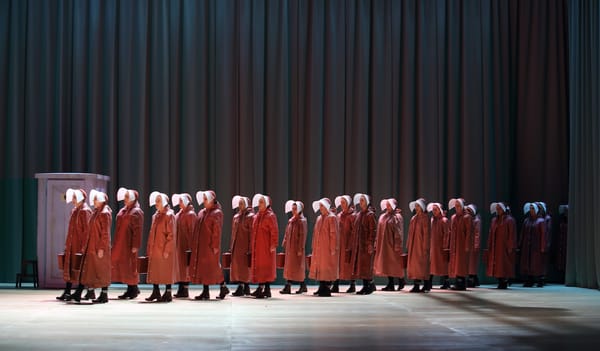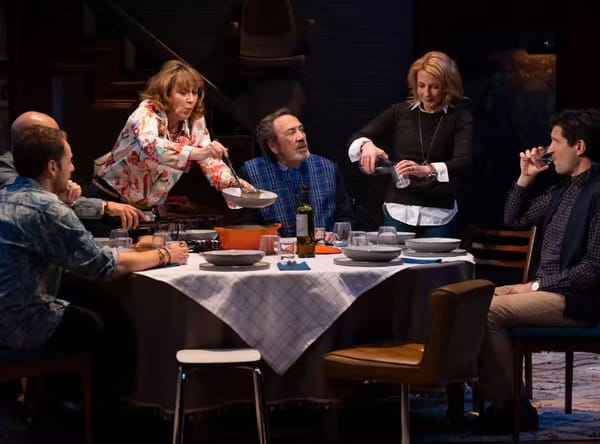Oklahoma! Review
An astounding crafted deconstruction of the golden age musical

Oklahoma!
- What: Musical
- Where: The Young Vic
- When: Until June 25th
- Cost: Tickets from £10
The romantism of “America”, the glint in the eye of 20th century immigrants, the shining paragon of democracy and civilisation where the streets are paved with gold is decimated in Jordan Fish and Jordan Fein’s production of Oklahoma! The musical, often heralded as the jewel in the crown of the golden age of American musicals, is on the surface a jovial affair. Toe tapping barn dances, cowboys, and little houses on the prairie, on paper it commemorates the founding of the state of Oklahoma. It is therefore a declaration of American identity, something that would have struck a chord in a world war ravaged world in 1943 when it first premiered on Broadway.
But here the horrific underbelly of the musical is ripped open. Out spill its guts, the violence, blood, and terror coiled at the heart of America like a maggot feasting on decay.
A transfer from America where the Tony award winning production premiered, directors Jordan Fish and Jordan Fein do away with the garlanded end stages of West End or Broadway theatres. Instead, the chameleonic Young Vic stage has been transformed into a wood panelled barn with audiences sat either side of the unraised stage. The whole production has a stripped back aesthetic with even the orchestration reduced to an on stage eight-piece band. The horror pregnant within the musical, ignored in traditions productions, is laid bare as a consequence.
Arthur Davrill’s Curley starts as a boot strapping everyman in pursuit of the love of Anoushka Lucas’ witty Laurey, serenading her and the audience with typically heartfelt rendition of Oh, What a Beautiful Morning. In every other production he is the American hero, unquestionably good, handsome, and eloquent. But peeling back the veneer layer by layer reveals a predator who manipulates and pollutes the room with his toxicity.
It is all there in the original; the unnerving relationship between Curly and Jud, a farm hand who is also in love with Laurie, is usually glossed over with pageantry. Pore Jud is Dead is here marked by a devastating use of lighting on behalf of lighting designer Scott Zielinski. The room is plunged into total darkness. There is nothing but the language, the horror and cruelty of a bully, the trembling fear of his victim. Patrick Vaill’s Jud is an alienated loner. Whilst other productions celebrate his ostracism from the community, this one deep dives into his despair and his tragedy.
The creative team balance the tonal shifts perfectly. The dialectics of darkness and frivolity coexist in all their terrible beauty. Laurey’s astoundingly choregraphed dream sequence is a Lynchian nightmare with dancer Marie-Astrid Mence navigating a labyrinth of absurdist images. A lone electric guitar wails over her like a banshee, distorting the musical leitmotifs. Evoking Jimi Hendrix’s Woodstock rendition of the Star-Spangled Banner, it is not just the music that is distorted, but the ideology the music stands for.
The second the sequence is over, the cast spring into an uncannily upbeat hoe-down. The shock lingers, painfully juxtaposed with the merriment. Daniel Kluger must be applauded for injecting the score with devastating electricity; his music is brought to life by a powerful cast of singers. Marisha Wallace particularly shines with her astute take on Ado Annie, her I Can’t Say No receiving a rapturous applause from the audience.
This production a far cry from the Oklahoma! That once was. How can it be the same again?








